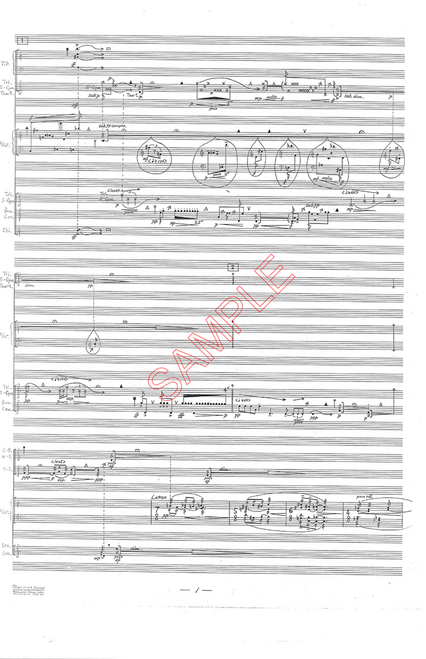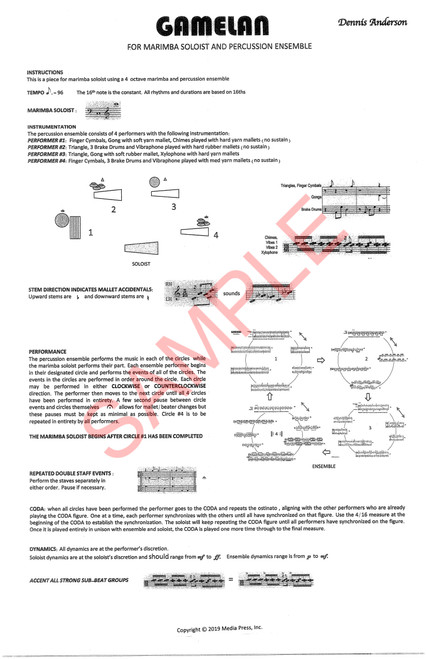Includes score. (Three scores needed for performance.)
Print size: 11 x 17"
Review from Percussive Notes:
Paradox III
Takayoshi Yoshioka
Helping to place Takayoshi Yoshioka on the percussive map, Percussion Group Cincinnati premiered “Paradox III” in 1979 on their very first concert. Since the premiere, Yoshioka has been performing and composing around the world, helping to spread the beauty and complexity of the language of Japanese marimba literature. Originally written for the Cincinnati Conservatory of Music’s International Compositional Contest and the Blackearth Percussion Group, this 11-minute work for solo marimba and two percussion accompanists traverses a variety of expressive moods, smoothly transitioning between lyrical, sustaining passages and aggressive, angular riffs played out by all three performers.
Maintaining an arrhythmic and through-composed nature, Yoshioka utilizes extreme dynamics and rhythmic density to help propel this piece from start to finish while providing landing points within the phrases. Musical episodes are broken up using a variety of techniques: impactful explosions of a multitude of notes by one or more players, breaks of silence to help reset the palette, and sustained rolls that slowly shift into brand-new ideas. As the piece progresses, the marimba solo becomes more complex and rhythmically active, culminating in an exciting flurry of notes that evaporates into the final slow passage.
If you are expecting something more akin to his marimba quartet “Square Dance,” look elsewhere. The cadenza nature of each passage forces the soloist to think critically and musically with each note, and the percussionists have similar challenges. All three parts require advanced performers to effectively line up the intricate rhythms and maneuver around the various multi-percussion setups and melodic instruments. Despite the challenges, “Paradox III” contains a unique array of sonic elements that differs from traditional marimba solo repertoire, warranting investigation if you want to delve into less common Japanese marimba literature.
—Matthew Geiger, 2020
Demo:







